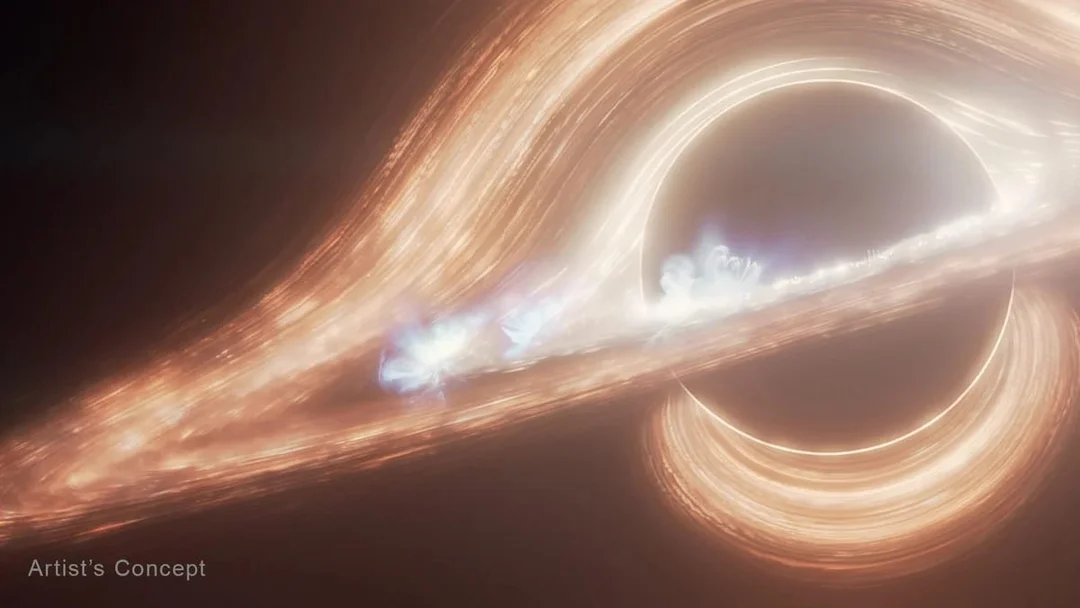
James Webb Telescope Unveils Chaotic Light Show at Milky Way’s Heart, Challenging Black Hole Theories
The James Webb Space Telescope (JWST) has once again captivated the scientific community with groundbreaking observations, this time peering into the turbulent heart of our own Milky Way galaxy. Focusing on Sagittarius A* (Sgr A*), the supermassive black hole residing at the galactic center, JWST has revealed a chaotic and dynamic environment of light and energy, challenging existing theoretical models of black holes and their surroundings. This discovery isn't just a pretty picture; it's rewriting our understanding of cosmic behemoths.
Located approximately 26,000 light-years from Earth, Sgr A* has long been a subject of intense study. While the Event Horizon Telescope provided the first direct image of Sgr A* a few years ago, JWST now offers an unprecedented look at its immediate environment. Using its Near-Infrared Camera (NIRCam), JWST spent 48 hours scrutinizing the accretion disk – a swirling vortex of gas and dust heated to millions of degrees as it spirals towards the black hole.
What JWST revealed was far from the dark, silent abyss previously envisioned. Instead, scientists observed a "frenzied dance of light," characterized by a continuous flickering interspersed with intense and seemingly random eruptions. As Farhad Yusef-Zadeh from Northwestern University, who led one of the observing teams, explained, "We observed constantly evolving brightness. Suddenly, a burst of brightness appears, then calms, without following a precise pattern."
This chaotic activity suggests that Sgr A* is not a passive object, but a dynamic and constantly evolving environment. The light emissions occur on two levels: a faint, continuous component likely due to internal turbulence within the accretion disk, and brief, extremely bright eruptions associated with magnetic reconnection – the collision of magnetic fields releasing vast amounts of energy, akin to solar flares but on a much grander scale.
One of JWST's key strengths lies in its ability to observe two infrared wavelengths (2.1 and 4.8 micrometers) simultaneously. This "dual vision" revealed a temporal lag between the luminosity variations at different wavelengths. Events observed at the shorter wavelength changed luminosity slightly before those at the longer wavelength, pointing to a phenomenon called synchrotron cooling, where energetic particles lose energy as they cool down.
What does this all mean? The findings suggest that the accretion disk around Sgr A* is constantly being renewed, generating as many as six major eruptions daily. The observation of synchrotron cooling provides valuable insights into how energy is generated and dissipated in the extreme conditions near a black hole. It challenges existing theoretical models and opens new avenues for understanding these cosmic giants.
Looking ahead, researchers plan to conduct continuous 24-hour monitoring of Sgr A* to determine if the eruptions follow any specific patterns or are truly random. Every flash and variation of light captured by JWST brings us closer to understanding the extreme physical phenomena occurring near the event horizon, the point of no return.
Ultimately, the discoveries of JWST extend beyond a deeper understanding of Sgr A*. By studying the behavior of matter and spacetime under extreme gravitational conditions, scientists hope to test the limits of Einstein’s general relativity and perhaps glimpse new physical laws. Is this chaotic light show pointing us towards a new era in astrophysics? What other secrets does Sgr A* hold?
Share your thoughts and theories in the comments below. What do you think JWST will uncover next?